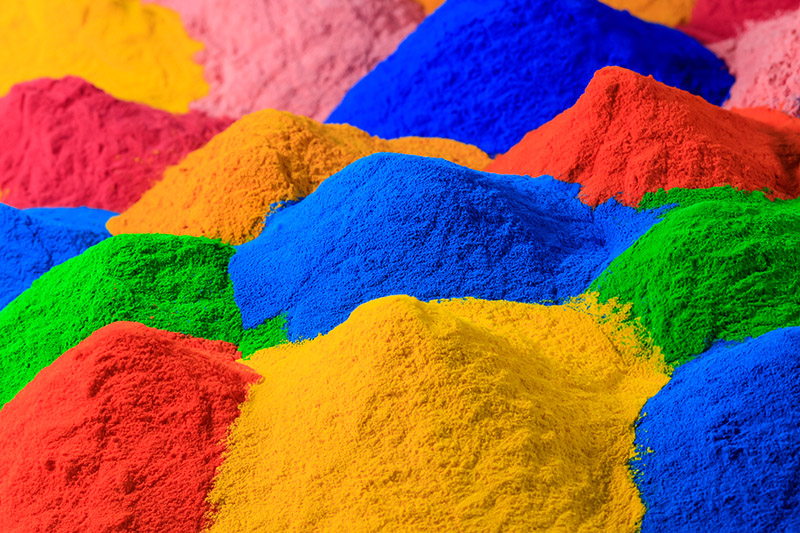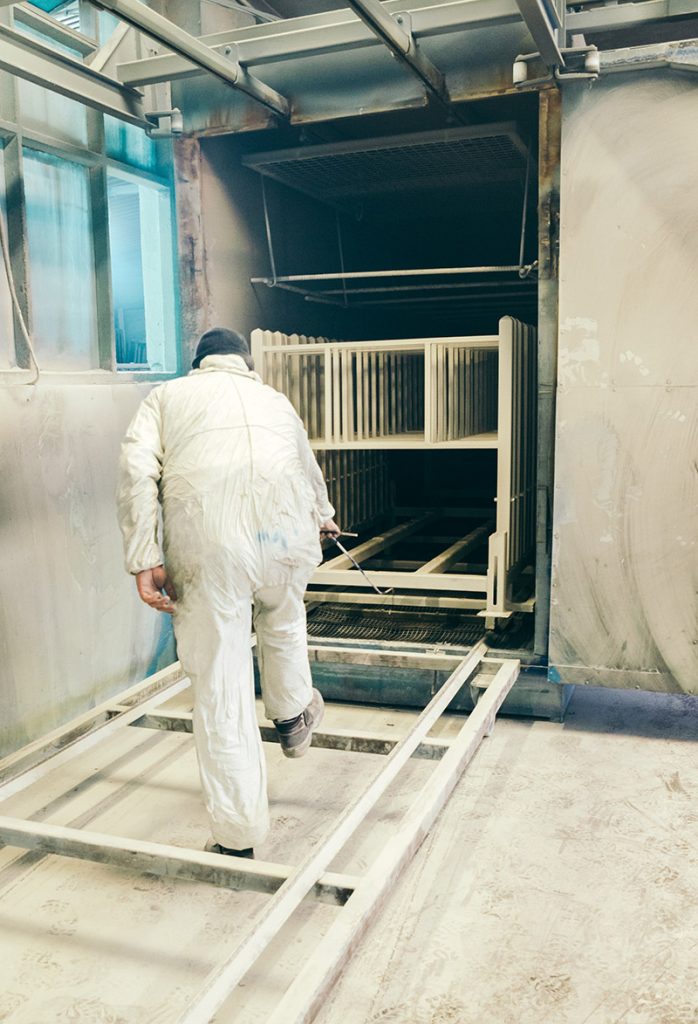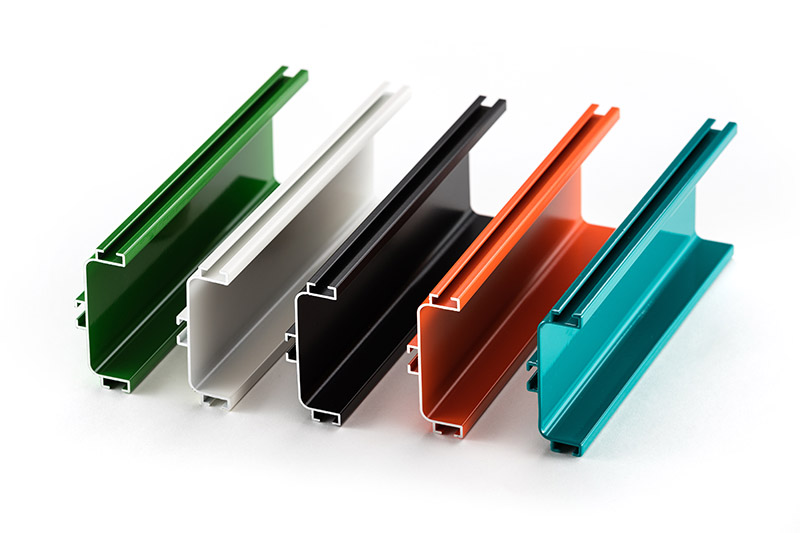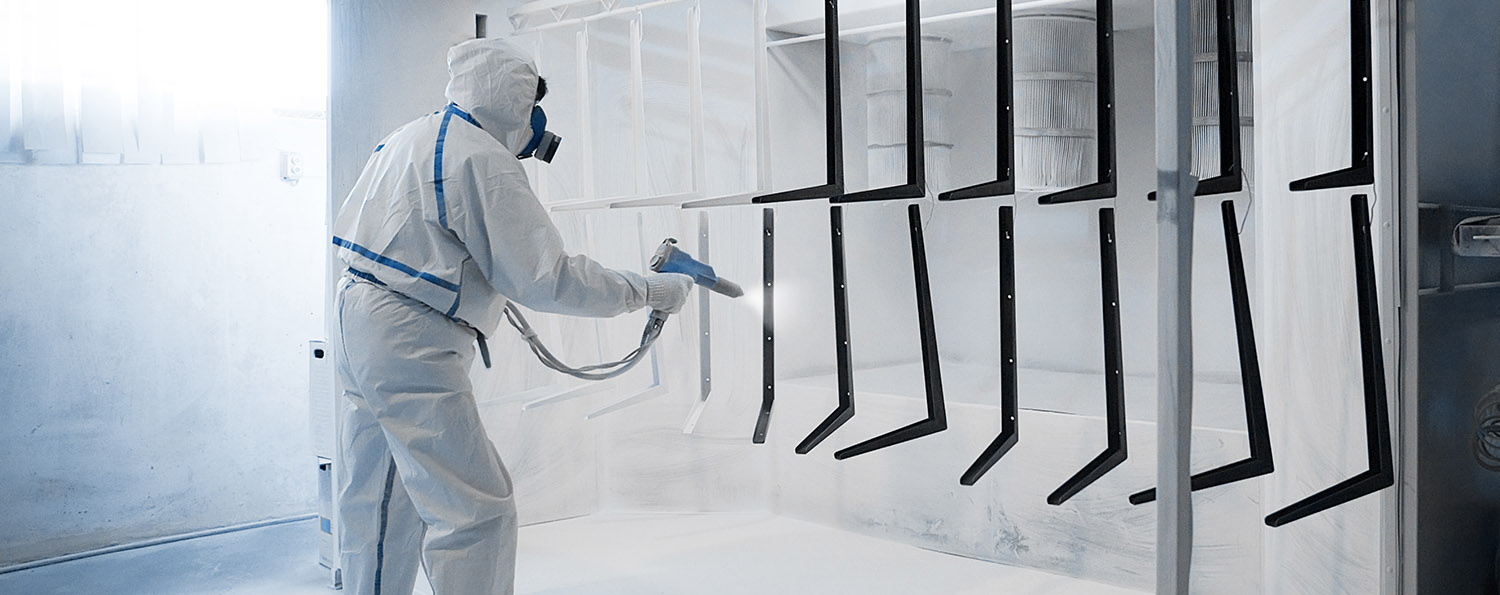Microform Precision offers in-house powder coating services. Because we do not send out parts to a third-party to powder coat, our production cycle is more efficient than many of our competitors.
What is Powder Coating?

Powder coating is a highly durable dry coating process, that is used for machinery and parts, as well as household products. Compared to liquid coatings, like painting, powder coating is more resistant to wear, scratches, corrosion, and chipping. It provides an attractive coating that is easy to spread evenly without runs.
Powder coating is also more environmentally-friendly than painting. Paint contains solvents, which are volatile organic compounds (VOCs), while powder coating contains no solvents. (Think burning of fossil fuels, pesticides, household cleaners, model glue for examples of other VOCs).
Powder coating can be applied in a wide variety of colors and textures. Metal parts, appliances, structures, and machinery are commonly powder coated. In some cases, powder coatings can also be applied to non-metallics surfaces such as medium density fiberboard (MDF).
There are two types of powder coating: thermoset and thermoplastic. The main difference between the two: thermoplastics can be remelted back into a liquified state, while thermoset coatings, once set, are in a permanent, irreversible state.
How Does Powder Coating Work?

Powder coatings are produced by mixing polymer resins, curatives, color pigments, flow modifiers, and leveling agents. This mixture is heated in an extruder, then it is rolled flat, cooled, and ground into a fine powder.
After a metal surface is prepared, the powder coating is applied using a special spray gun which adds a positive electrical charge to the powder particles. This is known as electrostatic spray deposition (ESD). The ionized powder coating particles are attracted to the grounded metal substrate.
The coated workpiece is then transferred from the spraying bay to a special oven used to cure the coating. We take care not to jostle or bump the workpiece during this movement, as the particles cling to the metal substrate via static electricity. If the workpiece is bumped, the coating can be displaced, causing an uneven coating.
In the curing oven, the primer coating is heated and “gelled”. If there is a second coating for a colored coating, the workpiece will be taken back to the spraying bay for a colored coating treatment, and then cured for the final stage.
More Advantages of Powder Coating
In most cases, powder coating is a lower cost option than standard paint.
Powder coatings are available in a wide range of texture and gloss options.
For metal products, it provides a durable coating that stands up well to impact, weather, chemicals, ultraviolet rays, and moisture.
Considerations for Powder Coating

Parts should have hanging hole or holes (depending on the weight of the part). Parts with no holes may not be able to be powder coated.
Smooth and glossy coats will show flaws much more easily than textured coats, thereby taking more time to provide. If you can go one way or the other, selecting a textured powder coat will be more cost effective.
Custom colors (as in, matching to an existing color) will be more expensive via powder coating than with painting on lower production runs.
We Only Use High Quality Powders
As with anything else, the quality of the powders used for coating make a difference. We use high quality powders made by manufacturers with a proven track record. This means you get a better finished product.

